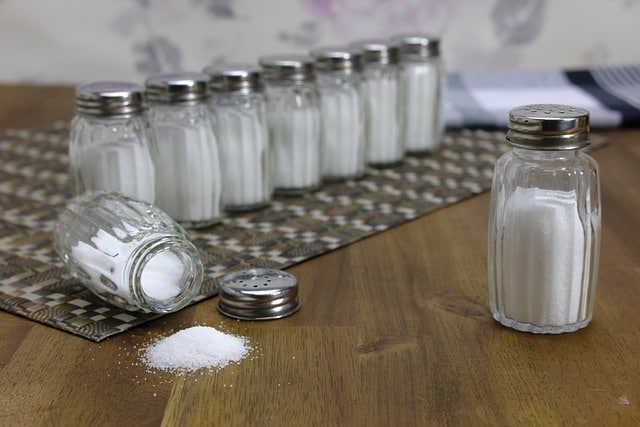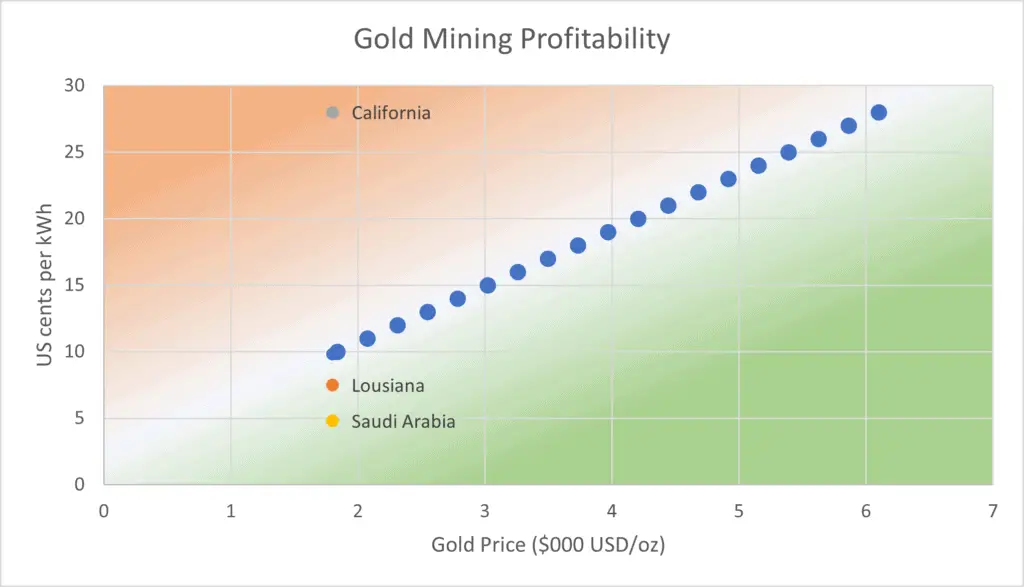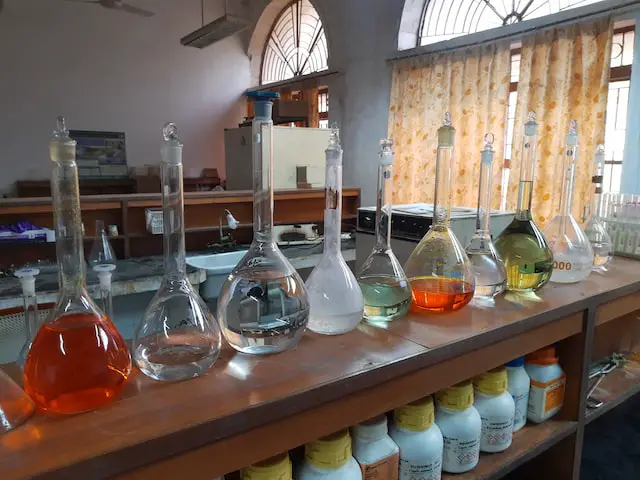
Desalination unfortunately produces a lot of waste products relative to the freshwater created. The waste products are released in the form of a highly saline brine which is generally pumped back into the ocean, evaporation ponds or injected underground into Oil and Gas wells. Frequently touted as a major shortcoming of desalination, what are some of the ways that brine can and is being utilized? The next question is, can this be done efficiently enough for it to be self-sustaining, or even profitable? I came up with this brief guide on the six main ways the salt leftover from desalination can be used and their relevant feasibilities.
The salt leftover from desalination can be utilized for battery metals, dietary supplements and industrial chemicals among other products. The profitable and sustainable extraction of byproducts from desalination waste is certainly possible with sufficient investment and careful planning.
Table Salt

The answer that everyone expects is converting saltwater to table salt, however, there are also other dietary supplements that can potentially be sourced from desalination brine. As you could imagine, it is certainly possible to extract table salt from desalination brine, although, how is it done and is it sustainable?
Despite what is commonly thought, there are a lot more substances in salt water than just plain old table salt (Sodium chloride) this means that evaporating seawater will produce a slightly different product to regular table salt. The edibility of this sea salt depends entirely on where it is sourced, generally speaking, microorganisms will not be able to survive in the high salinity environment so what you have to worry about are other dangerous contaminants like heavy metals and hydrocarbons. If the seawater is from a clean ocean then the salt should be just fine for human consumption. The economics of this depends primarily on the cost of land, evaporation ponds need to be huge in order to handle all of the brine from larger desalination plants. For instance, the Carlsbad plant in California would not be able to do this as the price of land in the surrounding area is millions of dollars for a house, let alone multiple acres for evaporation ponds! However, somewhere like the Ras al Khair plant in Saudi Arabia may be able to utilize some of the cheaper arid lands nearby for such a venture.
The main advantage of extracting sea salt is its simplicity, there is no additional refinement of the brine required, just simply pump it into some evaporation ponds and then collect the salt.
Dietary Supplements

Similar use to table salt, dietary supplements are used for human consumption, examples of this that could be easily extracted from desalination brine are magnesium, potassium, boron and calcium. Unlike table salt, however, these require additional refinement of the desalination brine in order to separate them due to their significantly lower concentrations. There are various precipitation steps that can be followed for each dietary supplement mineral, depending on the target mineral(s). One patented method for removing magnesium is actually precipitating it as a hydroxide as part of a larger process to extract lithium! This magnesium hydroxide can be used as a digestive aid however magnesium is more frequently consumed in other forms like magnesium citrate, which is produced by another patented process of reacting it with edible citric acid.
Energy Metals

Over the last decade, electric cars have become exponentially more popular, this has driven interest in battery metals and sent their prices soaring, which has helped make previously unviable mineral resources economically feasible. Desalination brine represents a potential source of both battery minerals like lithium and also a nuclear energy source, uranium.
Currently, the most common form of lithium extraction from brine involves evaporation and subsequent chemical treatment to obtain lithium of sufficient purity. This method has significant shortcomings in both the chemical additives required & the remaining residue which is considerably worse for the environment than the original brine! Thankfully there are advancements being made in this area in the form of direct lithium extraction through elective electrolysis or selective absorption, both patented activities whose inner methodology are confidential. Thus far these techniques have proven to be a huge improvement over the traditional approach, both economically and environmentally. Traditional techniques have a recovery of under 40% with newer methodologies being in the realm of 90% in addition to having minimal impact on the saline brine.
Precious Metals
The idea of mining the ocean for gold has long been hypothesized in human history, although its viability has always fallen short, due to desalination brine essentially being seawater of higher concentration, it increases the chance of gold mining feasibility. Like regular mining, extracting minerals from the ocean is a factor of the price of the substance, in this case, gold and the cost to get it out, as the concentration increases the unit cost of extraction decreases, improving its economic case. Most extractive technologies to exploit the ocean’s gold involve selective electrolysis, with one patented system claiming high efficiency using tin sheets to selectively remove gold from concentrated seawater. Using the figures provided in the patent I came to the profitability chart below utilizing the current global gold price of $1800 USD/oz and the local electricity prices for California, Louisiana (The cheapest electricity in the US and Saudi Arabia, the largest desalinator in the world.

It can be seen that Assuming you could replicate the economics and efficiencies attained in the patented method at a large scale gold mining from desalination brine could be a potentially viable venture at current prices in Louisiana or Saudi, however, the high cost of electricity in California makes it unprofitable.
As this venture is very dependent on low energy prices and high gold, it would likely only be undertaken after prolonged periods of low energy costs and stable gold, something that is not realistic in the immediate future. It has to be noted that if gold extraction were built in conjunction with some of the other uses in this article and synergies were obtained between the various uses, the business case would surely become compelling.
Industrial Metals & Chemicals

Industrial metals and chemicals can be extracted from desalination brine, including some of the very chemicals used in the desalination process itself. Rubidium is one industrial metal that is present in potentially viable quantities in seawater/desalination brine. Rubidium can be separated from brine through chemical extraction, the problem with chemical extraction, as mentioned in prior paragraphs is that it often makes the residual brine more toxic and less environmentally friendly. In order for the process of rubidium extraction to be viable, prices need to reach new heights so that its increased profitability can be used to help offset any environmental damage.
Industrial chemicals, in particular, sodium hydroxide are also able to be drawn from desalination brine. Sodium hydroxide aka caustic is often utilized in the treatment of desalination plants to prevent fouling and wear and tear on the reverse osmosis membranes. A process being developed at MIT has the ability to extract sodium hydroxide from desalination waste for it to be stored and reused in the initial desalination process. This kind of extraction of material for use in the initial process is quite forward-thinking and will certainly help in both desalination viability, but also desalination’s renewable credentials.
https://www.webmd.com/drugs/2/drug-8802/magnesium-hydroxide-oral/details
https://patents.google.com/patent/US6143260A/en
https://www.researchgate.net/publication/245449198_Salt_production_from_brine_of_desalination_plant_discharge
letsdowater.com/why-doesnt-california-like-desalination-plants/
letsdowater.com/ras-al-khair-the-worlds-largest-desalination-plant/
nature.com/articles/s41545-022-00153-6
patents.google.com/patent/CN102285877A/en
pubs.rsc.org/en/content/articlelanding/2019/em/c8em00498f
ibatterymetals.com/insights/ecological-impact-of-traditional-mining-vs-direct-lithium-extraction
discovermagazine.com/the-sciences/6-times-we-tried-to-extract-gold-from-seawater
letsdowater.com/how-to-improve-desalination-efficiency-3-areas-to-focus/
patents.google.com/patent/CN103103564A/en
energysage.com/local-data/electricity-cost/ca/#:~:text=Electric rates in California,-The easiest way&text=The average residential electricity rate,rate of 19 ¢%2FkWh.
globalpetrolprices.com/Saudi-Arabia/electricity_prices/
sciencedirect.com/science/article/abs/pii/S0043135417305547
news.mit.edu/2019/brine-desalianation-waste-sodium-hydroxide-0213


